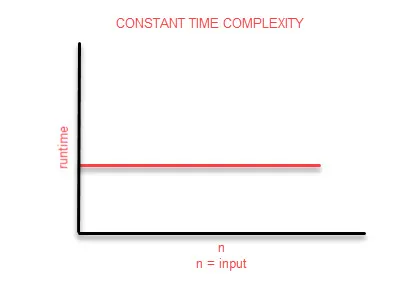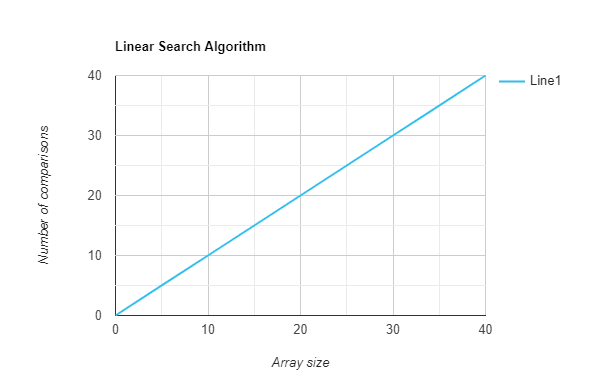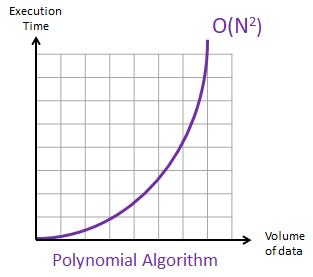Algorithms and Analysis of Algorithms
 Ramachandra Anirudh Vemulapalli
Ramachandra Anirudh Vemulapalli
An Algorithm is a set of instructions to perform a task or to solve a given problem. For example, a recipe book is a collection of recipe in which each recipe provides a step by step instruction to prepare food. Let's say you want to prepare a tea. So, the steps would be -
Boil Water
Put tea in tea pot
Add hot water
Put hot tea into tea cups
Do you need sugar?
If yes, put it into tea cups
If no, do nothing
Stir, drink and enjoy!
Question: Print average of 3 numbers.
Let's say you want to write algorithm for it. So, the steps would be -
Perform sum of 3 numbers.
Store it in a variable sum.
Divide the sum by 3.
Store the value in variable avg.
Print the value stored in avg.
public void findAvg(int a, int b, int c) {
int sum = a + b + c;
int avg = sum / 3;
System.out.println(avg);
}
Analysis of Algorithm
An Algorithm is a set of instructions to perform a task or to solve a given problem. There are several different algorithms to solve a given problem. Analysts of algorithm deals in finding best algorithm which runs fast and takes in less memory.
For Example -
Q. Find sum of first n natural numbers.
Input: n = 4
Output: 10 i.e., (1 + 2 + 3 + 4)
Input: n = 5
Output: 15 i.e., (1 + 2 + 3 + 4 + 5)
Let's consider we have two programmers A and B, who come up following algorithms,
public int sum(int n) {
return n * (n+1)/2;
}
public int sum(int n) {
int sum = 0;
for(int i = 0; i <= n; i++) {
sum = sum + i;
}
return sum;
}
So how do we decide which is the best algorithm? We can decide algorithm performance based on two factors:
Time Complexity
Space Complexity
Time Complexity
It's amount of time taken by algorithm to run. The input processed by an algorithm helps in determining the time complexity.
Space Complexity
It's amount of memory or space taken by algorithm to run. The memory required to process the input by an algorithm helps in determining the space complexity.
Asymptotic Analysis of an Algorithm
Asymptotic analysis helps in evaluating performance of an algorithm in terms of input sizes and its increase. Using asymptotic analysis we don't measure actual running time of algorithm. It helps in determining how time and space taken by algorithm increases with input sizes.
Asymptotic Notations
Asymptotic Notations are the mathematical tools used to describe the running time of an algorithm in terms of input size.
Example - Performance of car in 1 litre of petrol
Highway (min. traffic) - 25 km/litre
City (max. traffic) - 15 km/litre
City + Highway (avg. traffic) - 20 km/litre
Asymptotic Notations help us in determining -
Best Case
Average Case
Worst Case
Types of Asymptotic Notations
There are three notations for performing runtime analysis of an algorithm -
Omega (Ω) Notation
Big O (O) Notation
Theta (Θ) Notation
Omega (Ω) Notation
It is the formal way to express the lower bound of an algorithm's running time. Lower bound means for any given input this notation determines best amount of time an algorithm can take to complete.
For example - If we say certain algorithm takes 100 secs as best amount of time. So, 100 secs will be lower bound of that algorithm. The algorithm can take more than 100 secs but it will not take less than 100 secs.
Big (O) Notation
It is the formal way to express the upper bound of an algorithm running time. Upper bound means for any given input this notation determines longest amount of time an algorithm can take to complete.
For example - If we say certain algorithm takes 100 secs as longest amount of time. So, 100 secs will be upper bound of that algorithm. The algorithm can take less than 100 secs but it will not more than 100 secs.
Theta (Θ) Notation
It is the formal way to express both the upper and lower bound of an algorithm's running time. By lower and upper bound means for any given input this notation determines average amount of time an application can take to complete.
For example - If we run certain algorithm and it takes 100 secs for first run, 120 secs for second run, 110 secs for third run and so on. So, theta notations gives an average of running time of that algorithm.
Analysis of Time Complexity (Big O Notation)
Rules of Big O(O) Notation
It's a Single Processor
It performs Sequential Execution of Statements
Assignment operation takes 1 unit of time
Return statement takes in 1 unit of time
Arithmetical operation takes 1 unit of time
Logical operation takes 1 unit of time
Other small/single operations takes 1 unit of time
Drop lower order terms
Drop constant multipliers
Calculating Time Complexity of Constant Algorithm
public int sum(int x, int y) {
int result = x + y;
return result;
}
| line no. | Operations | unit time |
| 2 | 1 + 1 + 1 + 1 | 4 |
| 3 | 1 + 1 | 2 |
$$T = 4 + 2 = 6$$
$$ T \approx C (Constant)$$
public int get(int arr[], int i) {
return arr[i];
}
$$Time\;Complexity = O(1)$$

Calculating Time Complexity of Linear Algorithm
public void findSum(int n) {
int sum = 0; // 1 step
for (int i = 1; i <= n; i++) {
sum = sum + i; // n steps
}
return sum; // 1 step
}
| line no. | operations | unit time |
| 2 | 1 | 1 |
| 3 | 1 + 3n + 3 + 3n | 6n + 4 |
| 4 | n(1 + 1 + 1 + 1) | 4n |
| 6 | 1 + 1 | 2 |
$$T = 1 + 6n + 4n + 2$$
$$ T = 10n + 7$$
$$ T \approx n$$
$$ Time\;Complexity = O(n)$$

Calculating Time Complexity of Polynomial Algorithm
public void print(int n) {
for (int i = 1; i <= n; i++) {
for (int j = 1; j <= n; j++) {
System.out.print("i= "+i+",j= "+j);
}
System.out.print("End of inner loop");
}
System.out.print("End of outer loop");
}
| line no. | operations | unit time |
| 2 | 1+3n+3+3n | 6n+4 |
| 3 | n(1+3n+3+3n) | 6n^2+4n |
| 4 | n^2(1+1+1) | 3n^2 |
| 6 | n(1) | n |
| 8 | 1 | 1 |
$$T = 6n + 4 + 6n^2 + 4n + 3n^2 + n + 1$$
$$ T = 9n^2 + 11n + 5$$
$$ T \approx n^2$$
$$ Time\; Complexity = O(n^2)$$

Subscribe to my newsletter
Read articles from Ramachandra Anirudh Vemulapalli directly inside your inbox. Subscribe to the newsletter, and don't miss out.
Written by

Ramachandra Anirudh Vemulapalli
Ramachandra Anirudh Vemulapalli
NetworkNomad: Buckle Up, Tech Travelers! ☕ Welcome aboard, fellow tech travelers! Buckle up because we're about to deep-dive into the intricate, ever-evolving world of networks and beyond! My toolbox? Think Willy Wonka's factory of code! Python and Java are my trusty steeds , while React.js and Vue.js are my paintbrushes for vibrant web experiences . Node.js keeps the backend humming like a beehive , while MySQL, PostgreSQL, and MongoDB dish up data like a cosmic buffet ✨. But I'm not just a code cowboy ! Machine learning is my latest playground , where algorithms dance and data sings . And when the dust settles, you'll find me lost in the terminal's labyrinthine beauty ⌨️, whispering commands like incantations to tame the silicon beast ⚡️. This blog is my chronicle, a tapestry woven from late-night coding sessions , caffeine-fueled epiphanies ☕️, and the occasional circuit-bending headscratcher . Join me as I unravel network mysteries, explore tech frontiers , and share my grad school adventures along the way! So, whether you're a seasoned programmer , a curious newbie , or just someone who enjoys a good tech yarn , grab your favorite beverage ☕ and pull up a virtual chair 🪑. The network, with all its twists and turns , awaits! ✨